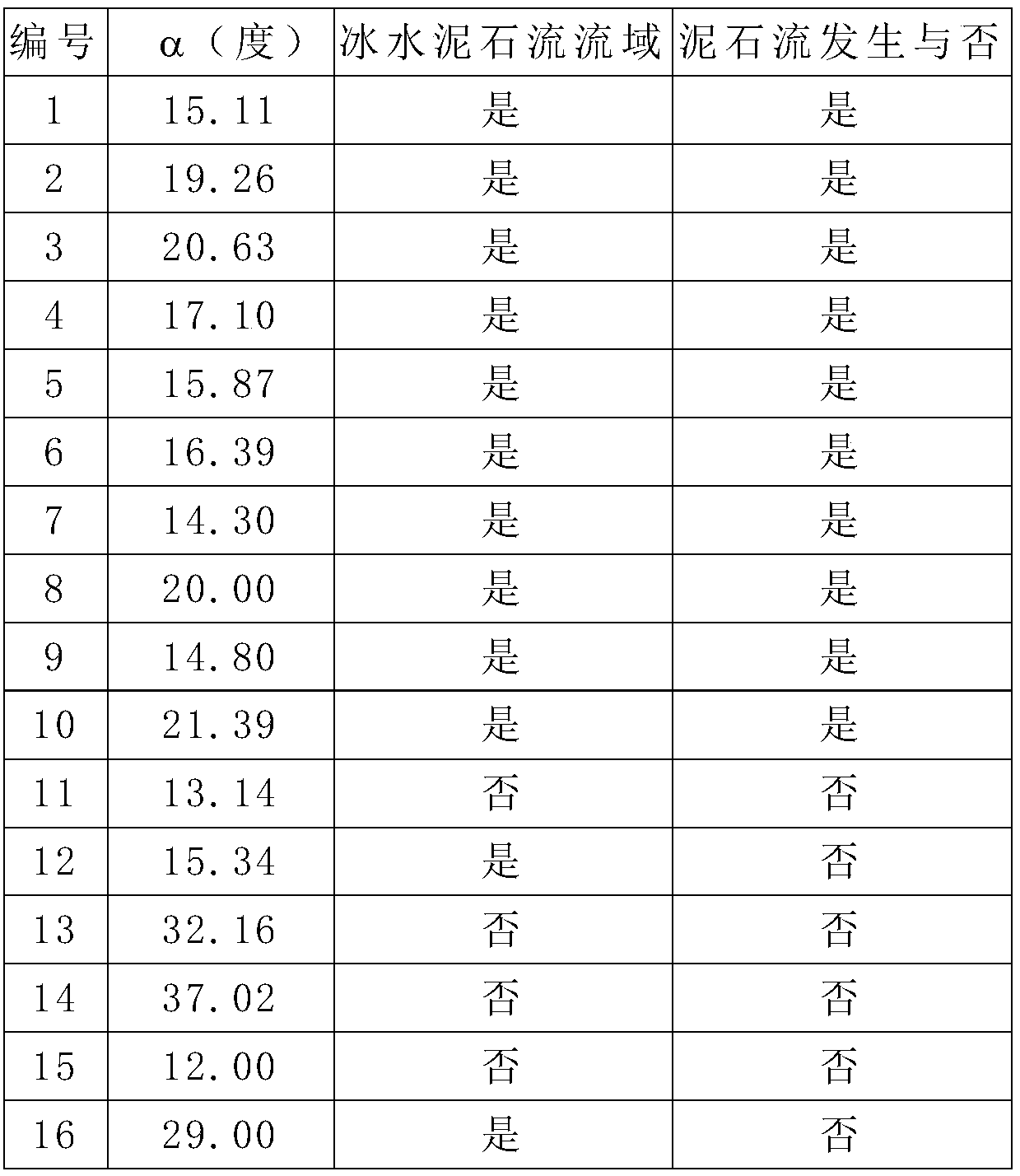Early-stage identification method of ice-water debris flow and application of early-stage identification method
An early identification and debris flow technology, applied to instruments, alarms, etc., can solve the problems of inability to effectively evaluate, prevent and warn of ice, cement and rock flows, in-depth research on terrain conditions, and inability to identify and correctly judge ice, cement and rock flows, etc., to achieve early identification The effect of reasonable judgment, accurate early recognition and judgment, and strong applicability
- Summary
- Abstract
- Description
- Claims
- Application Information
AI Technical Summary
Problems solved by technology
Method used
Image
Examples
Embodiment 1
[0029] The early identification method of ice and cement flow includes the following steps:
[0030] a. Through Google Earth or on-site measurement, determine the basic topographic data of ice and cement flow: the slope of the ditch bed in the formation area above the accumulation area below the glacier and snow accumulation area;
[0031] b. Measure the slope α of the gully bed of the glacier and the formation area below the snow accumulation area and above the snow accumulation area at different slope sections, and measure the channel slope with the channel length ≥ 10m as the standard;
[0032] c. Early identification of ice, cement and rock flows at different slopes through the slope α of the gully bed above the accumulation area below the glacier and snow-covered area:
[0033] When 14°<α<30°, it is identified as ice cement flow;
[0034] When α≤14° or α≥30°, it is identified as non-ice cement flow;
[0035]d. According to the early identification of ice cement rock flo...
Embodiment 2
[0038] The early identification method of ice and cement flow includes the following steps:
[0039] a. Through Google Earth or on-site measurement, determine the basic topographic data of ice and cement flow: the slope of the ditch bed in the formation area above the accumulation area below the glacier and snow accumulation area;
[0040] b. Measure the slope α of the gully bed of the glacier and the formation area below the snow accumulation area and above the snow accumulation area at different slope sections, and measure the channel slope with the channel length ≥ 10m as the standard;
[0041] c. Use the slope α of the gully bed above the accumulation area below the glacier and snow-covered area to identify the ice-cement rock flow at different slopes at an early stage:
[0042] When 14°<α<30°, it is identified as ice cement flow;
[0043] When α≤14° or α≥30°, it is identified as non-ice cement flow;
[0044] d. According to the early identification of ice cement rock fl...
PUM
 Login to View More
Login to View More Abstract
Description
Claims
Application Information
 Login to View More
Login to View More - R&D
- Intellectual Property
- Life Sciences
- Materials
- Tech Scout
- Unparalleled Data Quality
- Higher Quality Content
- 60% Fewer Hallucinations
Browse by: Latest US Patents, China's latest patents, Technical Efficacy Thesaurus, Application Domain, Technology Topic, Popular Technical Reports.
© 2025 PatSnap. All rights reserved.Legal|Privacy policy|Modern Slavery Act Transparency Statement|Sitemap|About US| Contact US: help@patsnap.com


